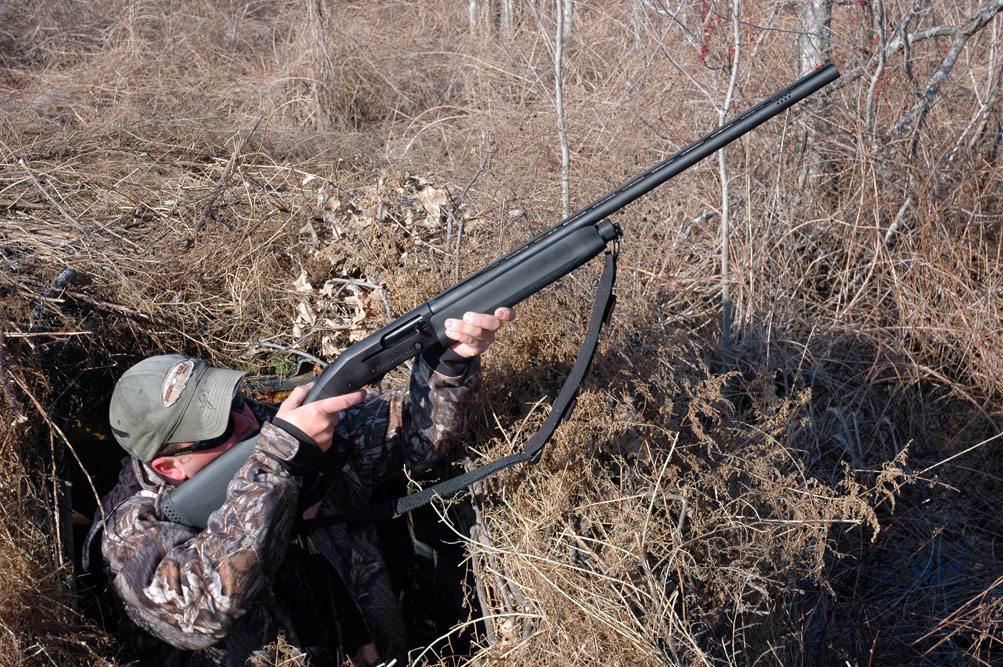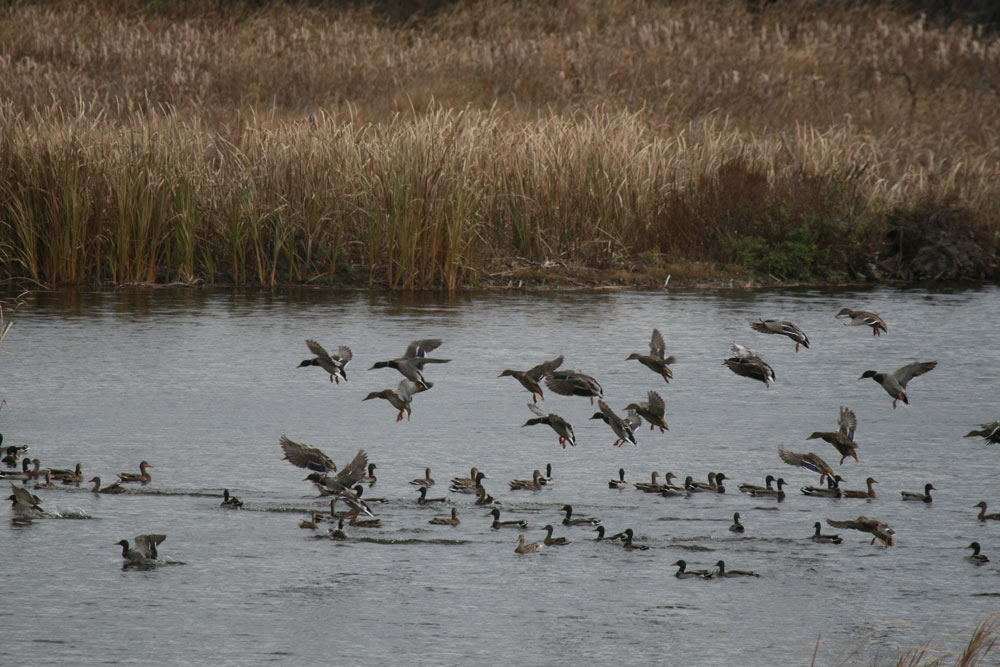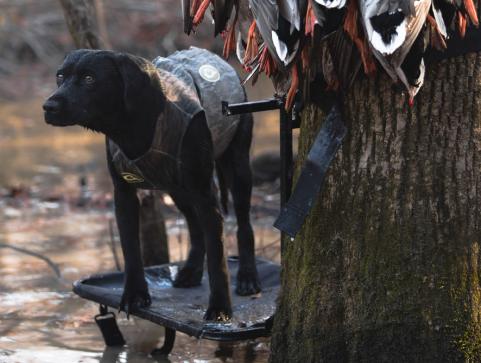provided by John E. Phillips
Mossy Oak Waterfowl Pro Barnie Calef from Cedar Rapids, Iowa, is a leading authority on waterfowl hunting and has won three World Duck Calling Championships. Calef travels the nation teaching waterfowling seminars for many of the nation’s leading outdoor companies. “I can’t remember when I didn’t wear Mossy Oak camouflage,” Calef says. “I believe in it, and that’s why I wear it.” Calef masterfully calls ducks with his Calef Calls Inc. brand. The migration has about ended, and we wanted to know how Calef finds, calls, decoys and takes ducks in his home state of Iowa.

The seminars I once did were called, “The Dynamics of Duck Hunting.” But now, I have changed what I speak on, and the seminar is called, “Positioning for a Shot.” The people who come to my seminars think I’m talking about positioning the boat or positioning the decoys to get shots at incoming ducks. My seminar is really about positioning the ducks, so the hunters can get their shots. I start off by telling people you may enjoy calling ducks and sky busting. But, I’m accustomed to having someone with a TV camera right over my shoulder every time I call or shoot ducks. The cameraman always asks, “Where are you going to take the ducks today?” The way I position my decoys and the way I call almost always can tell the cameraman where the ducks will be when I squeeze the trigger on my shotgun.
For instance, the spot might be 20-30 yards wide, and the birds would be 10-30 yards from the boat. Then the cameraman will know where to position his camera and how and when I will drop my call, pick up my gun and start shooting. We call the place where we go take the ducks, the pocket or the kill hole. An effective duck hunter, I believe, is a person who can put those ducks right in the spot where he wants to shoot them. And the two duck-hunting tools he uses to accomplish that feat are his duck calls and his decoys.
First of all, I use my Canada geese decoys to stop or block the incoming flight of ducks. I want the ducks to land right where the Canada geese decoys intersect or stop at my mallard decoys. So, you have to imagine the letter L laying down on its side. The short side of the L is where I put my Canada geese floating decoys. The long, horizontal end of the L is where I put my duck decoys. My blind will be where the Canada geese stop the ducks, and the pocket or the open water where I want the ducks to land will be right in front of the blind. I have more decoys where the duck decoys meet the Canada goose decoys than I do at any other place in front of the blind. On the long end of the L, there’ll be fewer mallard duck decoys than I’ll have where the mallard duck decoys meet the Canada goose floating decoys. The reason for setting up like this is that when ducks from the air come in to light with the ducks on the water, they usually prefer the light where there are the most ducks on the water. I don’t want any large concentrations of mallard decoys below my pocket or kill hole. I want the ducks in the air to have a clear lane to fly in-between the greatest number of decoys and the least number of decoys as they come toward the blind. I want them to put their feet out and cup their wings right in front of the blind - 20-30 yards from the blind.

Of course, ducks like any other wild critters, don’t always do what they are supposed to do; however, after 25 years of duck hunting most days of the season, I’ll say that 80-90 percent of the time the ducks will land right where I’ve told the camera man they’ll land. Now mallards are the ducks that are most likely to decoy like this, but mallards, gadwalls, pintails, canvasbacks, wigeons and all the ducks that usually will land in that pocket where the mallard decoys meet the geese decoys.
So, that’s another reason to have the goose decoys in your duck spread besides wanting the goose decoys to lure in the geese to your decoy spread to enable you to take geese as well as ducks. The geese generally will land in that same pocket where the ducks will land. We always try and set up our decoys, so that when the ducks and the geese come in, they can’t see anything beyond the blind but water. We don’t want them to be looking at trees, fields or islands behind our blind.






























